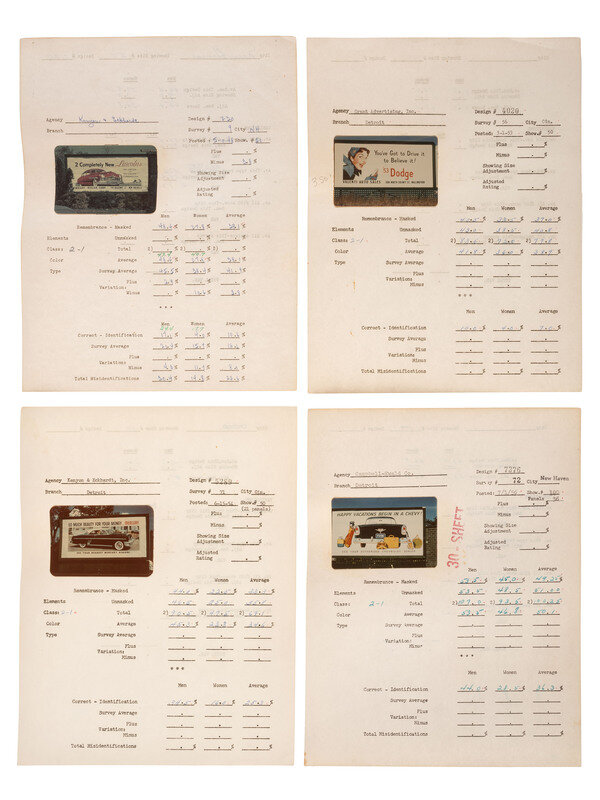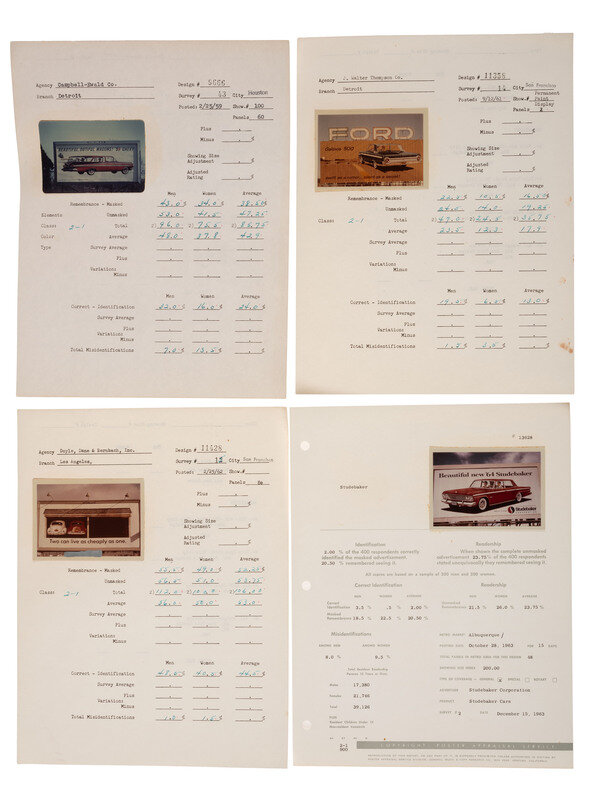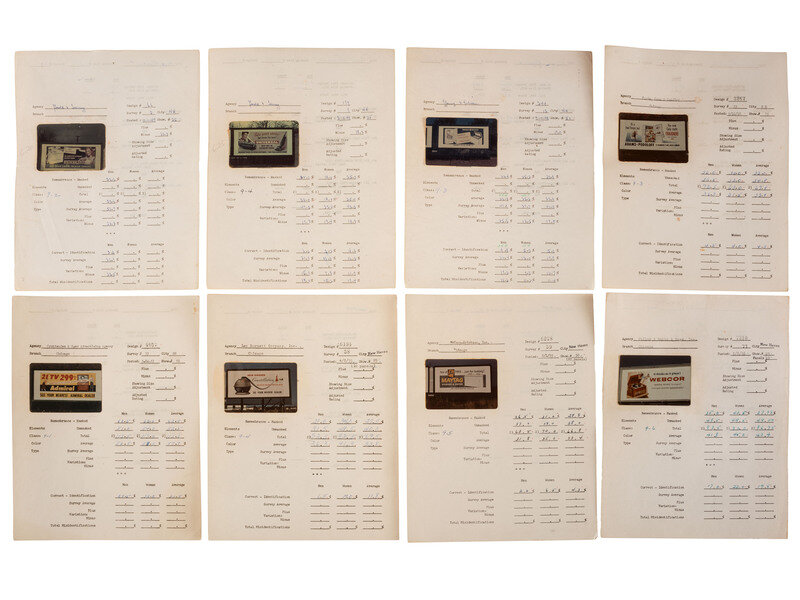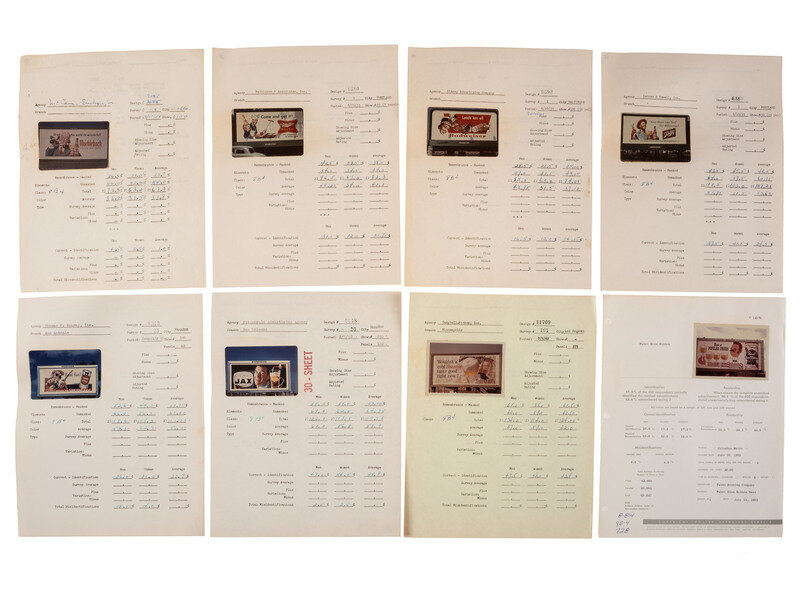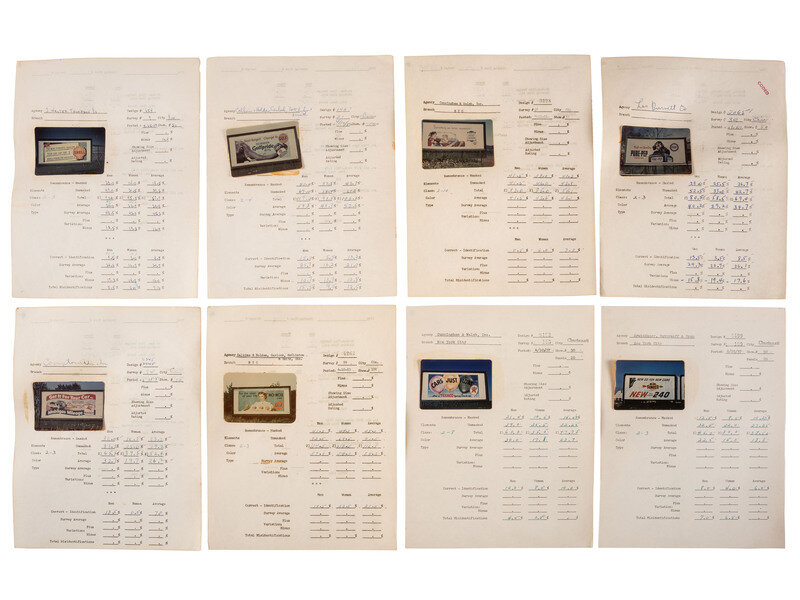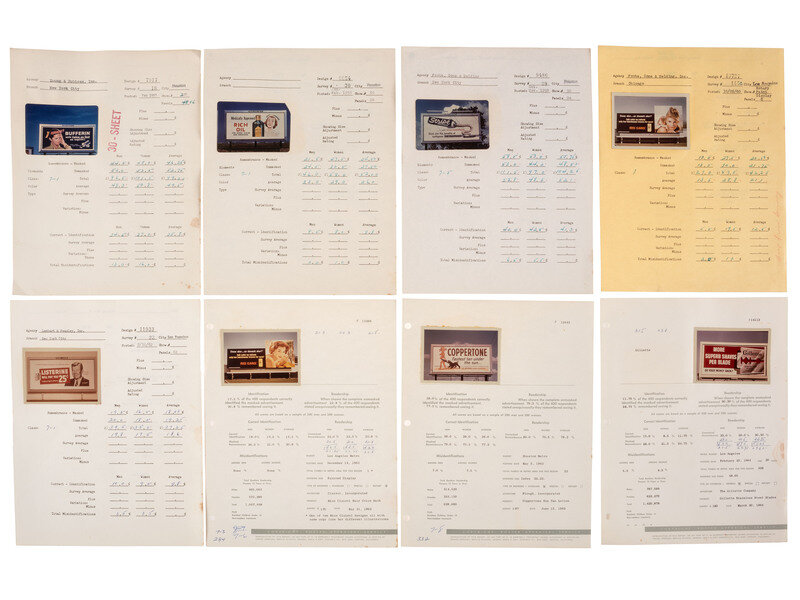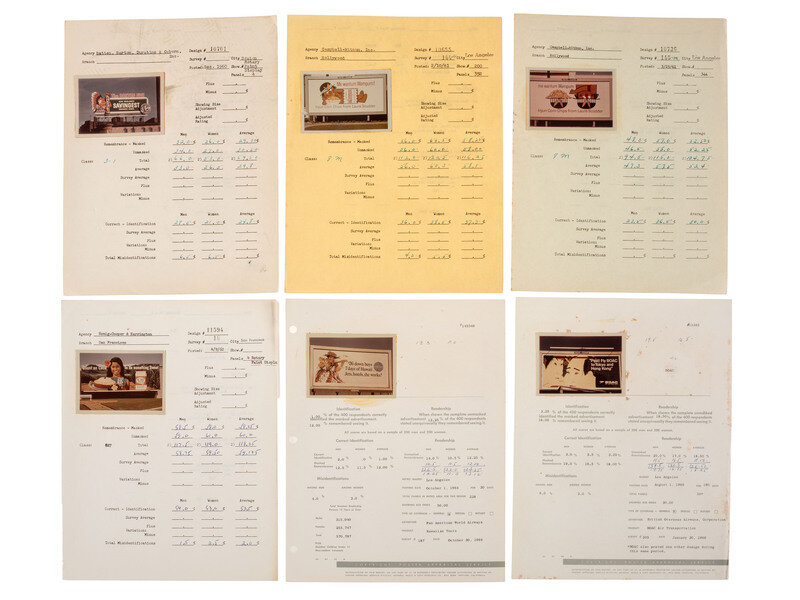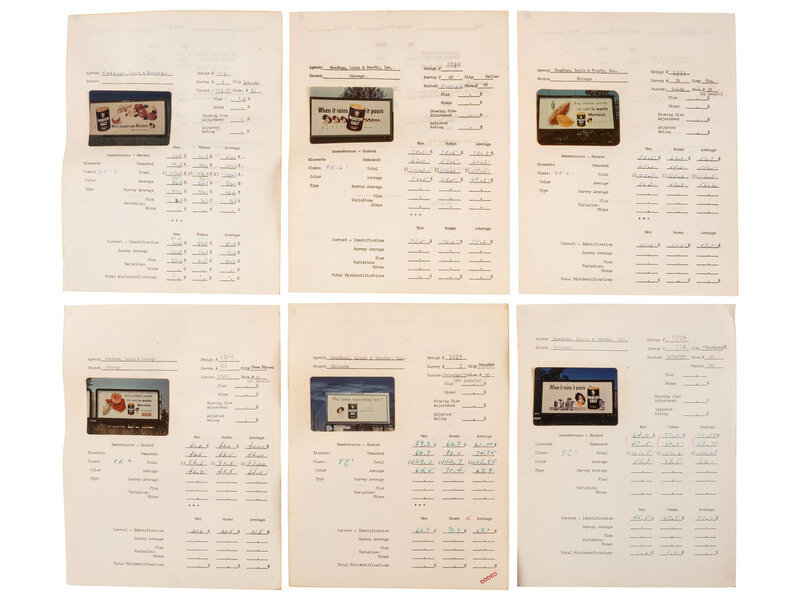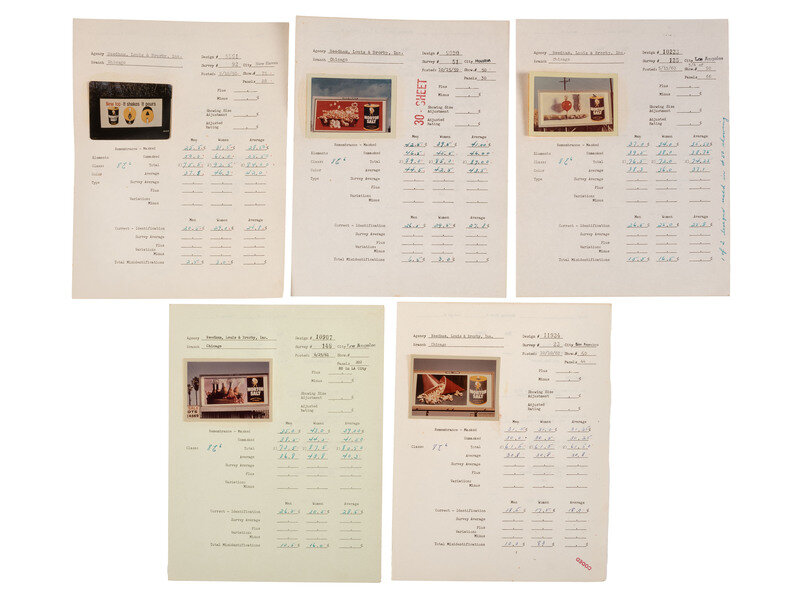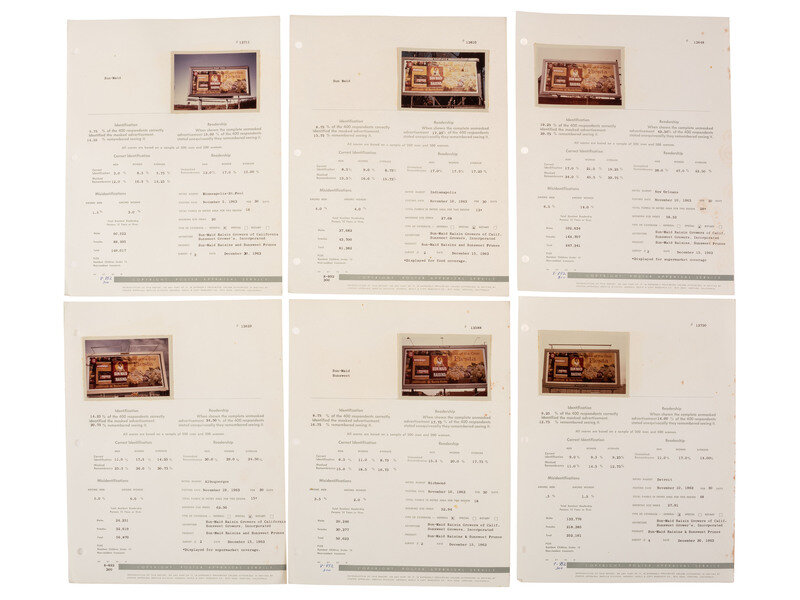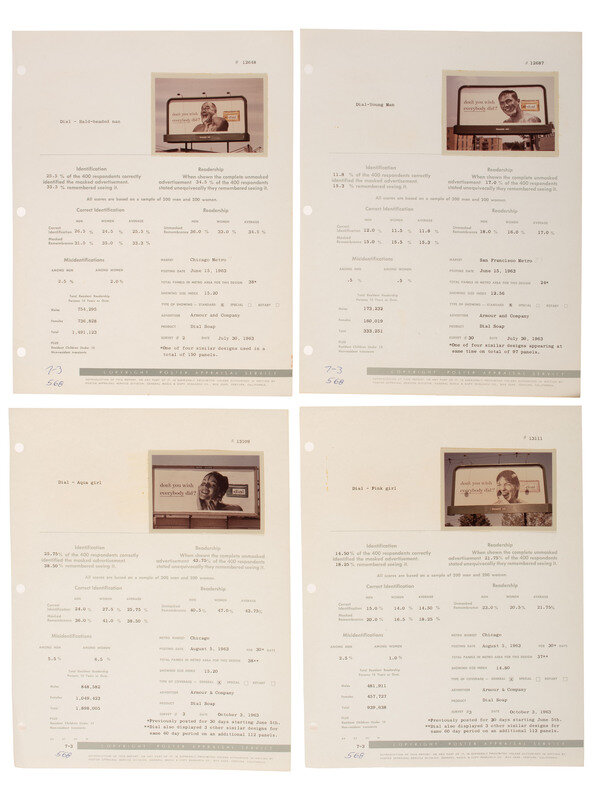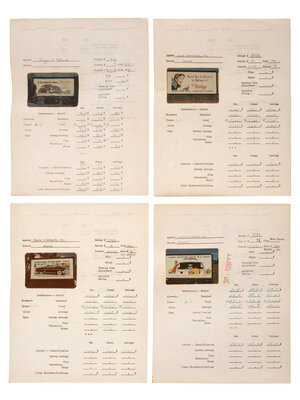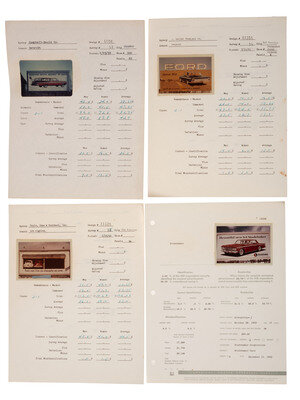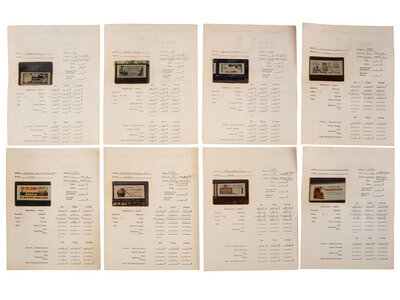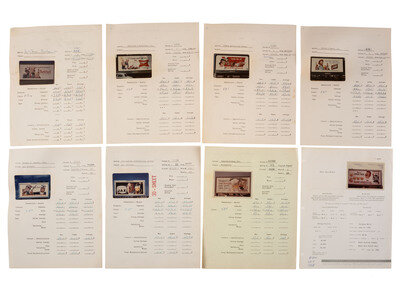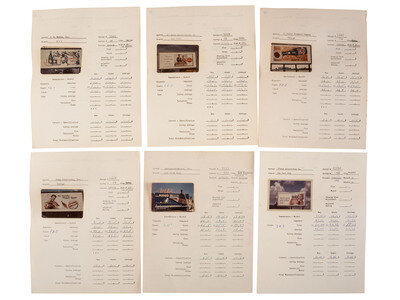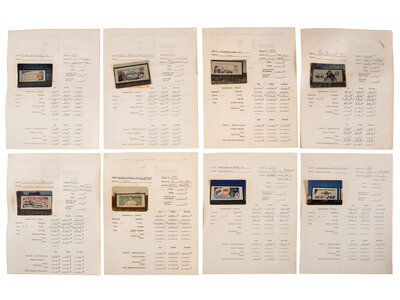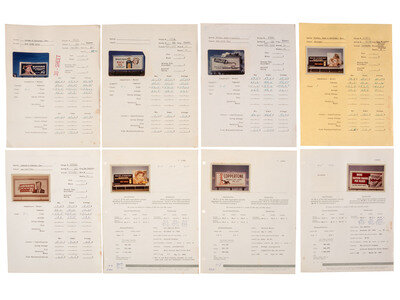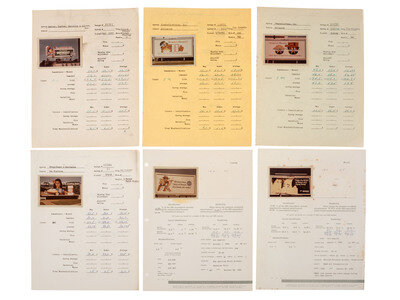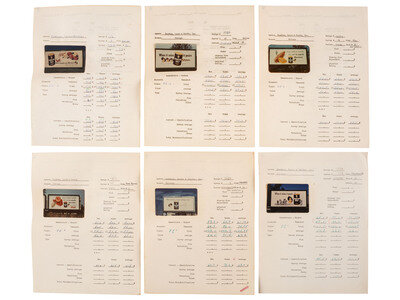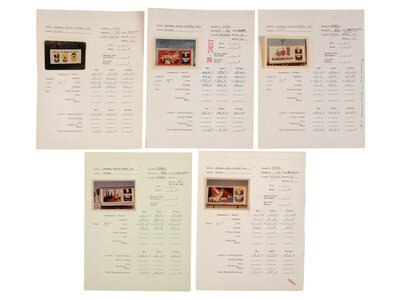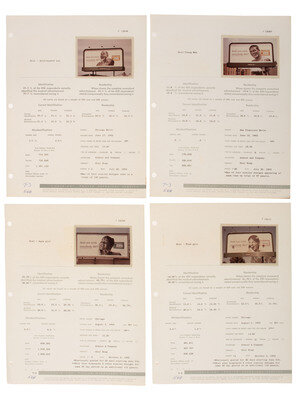Lot 566
[ADVERTISING]. Extensive collection of outdoor advertising survey reports and historical billboard images from the "Golden Age of Advertising."
Sale 2057 - American Historical Ephemera and Photography
Oct 25, 2024
10:00AM ET
Live / Cincinnati
Own a similar item?
Estimate
$7,000 -
10,000
Price Realized
$8,890
Sold prices are inclusive of Buyer’s Premium
Lot Description
[ADVERTISING]. Extensive collection of outdoor advertising survey reports and historical billboard images from the "Golden Age of Advertising."
Approx. 5,000 market research survey reports, spanning ca 1947-1966, each with an original color photograph measuring approx. 2 x 3 in. adhered to survey showing a billboard and its outdoor placement. Surveys cover hundreds (likely more) of different advertisement designs and examine the effectiveness of billboard design and layout. Reports show advertising placements in major markets across the United States, and how successful the ads were at driving recall across men and women. Survey research conducted by a wide range of companies, including advertising agencies such as Leo Burnett Company, Inc.; Needham, Louis & Brorby, Inc.; Campbell-Ewald Co.; D'Arcy Advertising; Foote, Cone, and Belding; J. Walter Thompson; McCann-Erickson; and Young and Rubicam. Billboards represent many of the preeminent consumer brands of the era and include iconic American brands such as Coca-Cola, Budweiser, Chevrolet, Ford, Cheerios, Campbell's, Jell-O, Hostess, and Gulf Oil. Collection demonstrates an evolution in messaging and creative strategies post-World War II and some of the earliest examples of out of home market research, while simultaneously shining a spotlight on consumer culture and 1950s/60s American society.
Provenance: Consignor relates the entire collection was purchased in an auction of items from a former museum collection.
The largest categories of billboards surveyed are for car manufacturers (Chevrolet, Ford, Dodge, Mercury, Oldsmobile, and more), food manufacturers (Del Monte, Heinz, Skippy, Fritos, Birds Eye, Carnation, Hellmann's, Oscar Mayer, and more) and alcoholic beverage companies (Budweiser, Miller, Lone Star, Pabst, Schlitz, Seagram's, Smirnoff, and more). Smaller subsets of billboards include those representing oil and gas companies, non-alcoholic beverages, health and beauty products, over-the-counter medicines, clothing, airlines, appliances, banks, and the "Yellow Pages." For some brands, the large number of survey reports demonstrates the evolution of marketing campaigns over the approximately twenty-year timespan of the collection. In other cases, the survey reports demonstrate the testing of similarly designed panels in different metro areas at the same timeframe to determine the overall most effective campaign. While the collection represents brands and companies that remain familiar today, it also includes lesser known and/or defunct brands such as "Granny Goose Potato Chips" and "Taystee Bread."
The United States experienced a large growth in consumerism post-World War II, followed by "The Golden Age of Advertising" in the 1950s and 1960s. The collection offered here provides a sweeping overview of the advertising industry during this "Golden Age," while illustrating broader social and cultural realities of American society. With few exceptions, the advertisements in the collection depict an American society that is notably absent of diverse representations of race, class, or gender. There are no African Americans or Hispanics present in the photographed advertisements. In the few advertisements depicting minorities, stereotypical and sometimes pejorative language and imagery are utilized. Asian Americans are present only in BOAC [British Overseas Airways Corporation] advertisements for flights to Asia. Hawaiian Islanders are represented in advertisements for C. & H. Sugar [California & Hawaiian Sugar Co.] and Pan American World Airways. Native Americans are represented in a campaign for "Wampum Injun Corn Chips." Similarly, women are generally represented in the traditional roles of mothers and homemakers. The consumers targeted for this wide array of products are inevitably white and increasingly prosperous, indicative of a growing American middle-class that sought to utilize its buying power in pursuit of the "American Dream" that advertisers purveyed.
A substantive and sizeable collection offering significant research potential and a photographic library of mid-twentieth century outdoor advertising.
Condition Report
Contact Information
Auction Specialist
